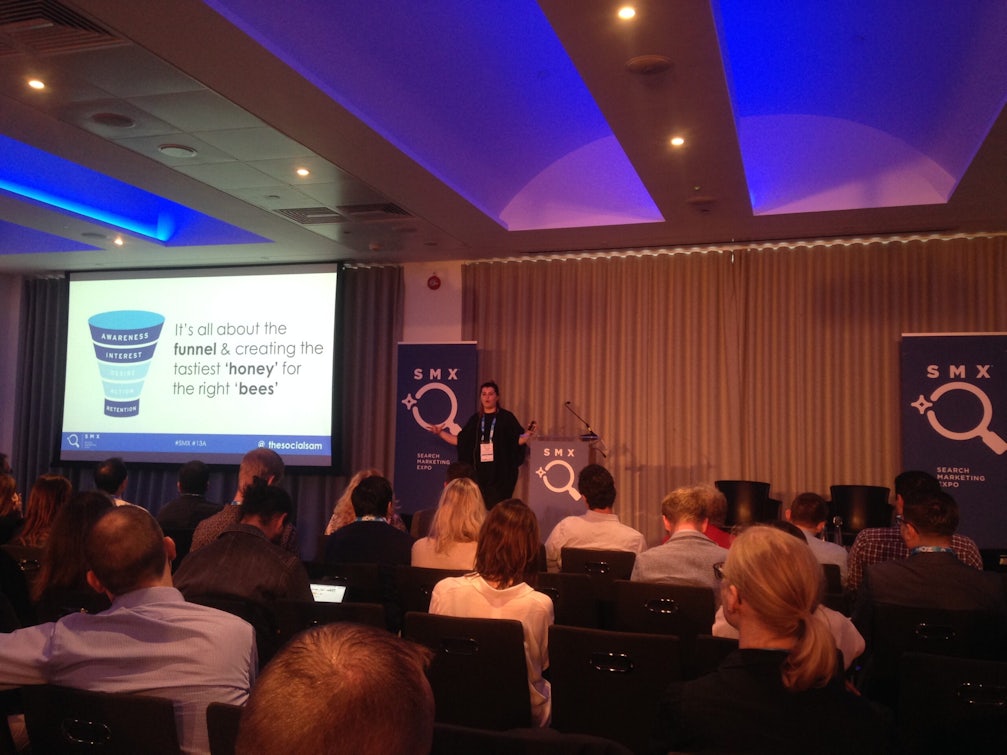Samantha doesn’t claim to be a search expert. Instead, she talks about how she focuses on social media, but recognises that we operate in a multi-channel world.
We work in silos, and we forget how the other channels around us can help us. This is very much the case with SEO and social media.
Audience insight through social media
Samantha says social media can help inform audience understanding, for more effective SEO strategies.
All social channels come with loads of information about your followers, which gives some great insight.
But, social media has limited ‘intent’ data. It can be tough to work out why these people buy…
… But SEO has that insight.
By combining the insights from social and SEO, we can better understand our audience.
Some tools Samantha recommends include:
- AHREFs
- Google Analytics
Social listening
This is the first thing Samantha’s team implements. They start at the bottom of the funnel to identify the audience that is already converting.
They take any key phrase data and plug them into their social listening tools. She says there’s a lot of free tools out there for social listening that make this easier.
Look at what people are saying about that topic to uncover questions:
- what type of content?
- what post type?
- what time of day?
- what communities?
Landing pages
They also use the keyword data from SEO to lead into their social posts, better understanding what keywords drive appeal.
Google featured answers
They use Google featured answers to better understand what the user is looking for and then create content around that.
Honeypot campaigns
Samantha says they use social to drive traffic to build remarketin campaigns.
It’s all about creating the right kind of honey – meaning content. Make sure it connects what you want to convert to the things thatwill drive that initial interrest.
This means that content is created, then distrubuted through social, then put into remarketing lists to hopefully convert them.
The objective is therefore to drive clisks through to the website. That’s why it’s important to know who your audience is, and create conten for them.
Things that work well for this include:
- story led content
- thought leadership content
- competition content
Then layer in data from in category affinity interests and other insights from SEO to recruit the right kind of bees to get conversions at the end.





